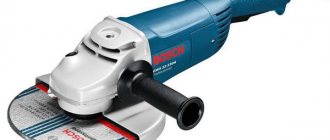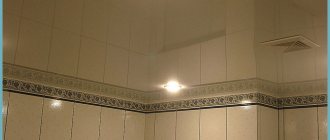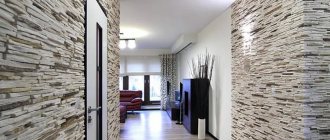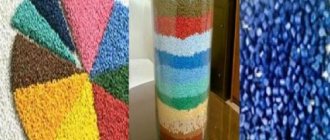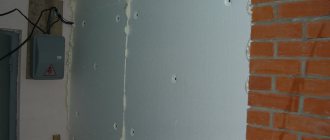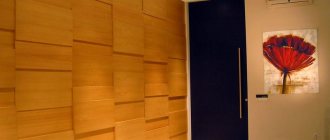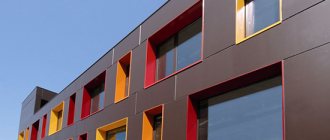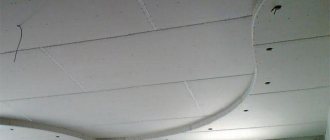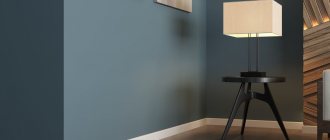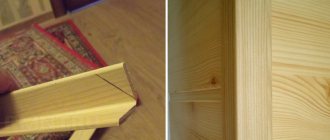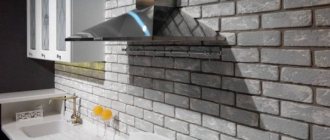Decorative panel PVC stone Opal 485x960 mm. Photo by Maxidom
The use of stone panels in modern interiors is becoming an increasingly popular solution. This facing material allows you to recreate the pattern and texture of natural rock. But the panels also have other positive characteristics.
Advantages and disadvantages, features
Stone panels are a decorative facing material. A room with this type of decoration acquires an original style and appearance. The material has a number of advantages:
Versatility , can be used on various surfaces and in various spaces. The panels have the ability to mask all defects and errors in the base, while at the same time giving the walls a visual resemblance to natural stone. Under the coating it is possible to hide main communications: pipes, wires, ventilation ducts.
Facade panel FineBer Series Scala. Teplostroy Photos
Light weight . Production is carried out from lightweight materials. As a result, the cladding does not weigh down the structure.
Strength and durability . Despite their lightness, the panels are made from strong, reliable and durable materials. After time, the panel will not change color, will not deform, and will lose color under the influence of ultraviolet rays (! panels are also successfully used for exterior decoration, but more on that later).
Ecological cleanliness. The panels are made from safe materials and components, which allows them to be used to decorate any room, including a children's room.
Resistance to high levels of humidity , which ensures successful use in the bathroom and kitchen, to temperature changes, frost and heat, the formation of fungus and mold.
Easy installation allows you to do the work yourself. This does not require special and expensive tools or professional knowledge and skills in the field of construction. The contractor will only need material for the sheathing (if frame installation technology is used), a stapler and staples. Ease of installation can also be seen in the absence of the need to prepare the base; minor surface defects are allowed. In addition, installation work can be performed in different climatic conditions.
Decorative panel PVC stone Calico 485x960 mm. for interior decoration. Photo by Maxidom
Price. Buyers note the affordable cost, especially in comparison with the materials that they imitate, i.e. artificial or natural stone.
Low maintenance requirements. An important advantage is that they do not attract dust. Therefore, it is enough to periodically wipe the coating with a damp cloth using any cleaning agent that does not contain chemical components. Cleaning is recommended once a month.
Non-combustibility , which allows the panels to be used for finishing fireplaces, stoves and other similar equipment.
Heat and sound insulation. Plastic and MDF panels increase heat and sound insulation performance, which is especially important for apartments.
Compatibility. The panels are harmoniously combined with various types of finishing materials: decorative plaster, natural wood, wallpaper.
Variety of types and textures.
The material has virtually no disadvantages. It is only possible to note the need for careful selection. Panels that are too cheap are most likely made from low-quality materials. As a result, expectations from the completed repair may not be met.
Criteria for choosing natural stone for finishing
Aesthetics. The buyer selects stones in accordance with his own preferences; fortunately, the variety of rocks, shapes and colors will please the most demanding client.
Strength and durability. Characteristics inherent in all of the above materials. The minimum service life of stone is 50 years, while neither wood nor siding can compete with the strength of stone material and its ability to maintain its original appearance for many years.
Fire resistance
A property inherent in all natural stones, which is especially important if the house is built using combustible materials. Presentability
Natural stone is an elite, expensive material, the masonry from which looks excellent
Presentability. Natural stone is an elite, expensive material, the masonry from which looks excellent
This finish makes an impression and creates a special atmosphere.
offers facing stone at a competitive price. You can buy goods wholesale and retail. All products are certified. Delivery throughout Moscow and the region is provided. For any questions, please contact our manager by phone +7 (495) 532-90-92.
Types of decorative products
Panels can be classified according to various criteria (practical and decorative): texture, product dimensions, color, but the main parameter is the material of manufacture.
Material of manufacture
Modern technologies make it possible to produce panels imitating stone from various materials . Production is carried out in accordance with casting technology, using various modifications of polymers. The casting method allows you to obtain any shape and texture : natural stone, wild, rocky, artificial, imitation brick. The main components are polyurethane foam, special resins and stone powder. Often production is made not only from plastic, but also from wood and aluminum. Depending on the type, the panels have some features and advantages.
Fiberglass
Fiberglass panels are a durable and lightweight material produced using the following technology : a pressing mold is made from natural stone, which is filled with liquid plastic and reinforced with fiberglass for strength, the front layer is painted. The result is a material that is visually similar to the natural prototype. Important distinguishing features are durability and low cost , resistance to mold and fungal infections, do not fade in the sun, and have sufficient strength parameters. These advantages ensure the versatility of the panels , which are suitable for decorating any room, wall decoration in classrooms and offices. Excellent for kitchen decor, as the material is durable and easy to care for. They are used to decorate the bathroom, as it is moisture resistant.
Reference. Fiberglass panels do not 100% meet environmental requirements, since they contain synthetic components, so this option is not optimal for bedrooms and children's rooms.
Fiber cement
The panels are made from sand and cement with the addition of mineral fiber and cellulose. The manufacturing technology is as follows. The cement solution is poured into a reinforcing frame made of cellulose, fiberglass or synthetics. The finished form is obtained by pressing , occurring under a pressure of 600-650 N/sq.cm, and autoclaving at a temperature of 175 degrees Celsius. The outside is covered with acrylic. Each product is tested to ensure compliance with specifications.
A significant amount of cement in the composition provides hardness . Some manufacturers add quartz sand and mica to the composition, which increases strength and, accordingly, durability. To provide resistance to ultraviolet rays, they are coated with varnish. The use of high-quality dyes allows you to create panels that are unique in texture and color.
Fiber cement panel Asahi (Asahi). Pechnik Photos
The main advantage is strength ; the performance of fiber cement panels corresponds to the parameters of porcelain tiles . Important advantages are fire resistance, resistance to low temperatures, and equipped with ventilation slots that allow air to circulate freely between the panel and the heat-insulating layer; they look very natural.
The disadvantages are the high cost, significant weight, which requires the installation of a powerful sheathing, some experts and buyers note that the appearance is not very attractive, as a result, painting is required.
MDF
The panels are produced in accordance with a special technology - dry pressing of wood chips . During the manufacturing process, the binding component lignin is released . Therefore, additional processing provides the panels with the ability to have fire-resistant properties , which significantly expands the scope of application. They have a number of positive characteristics:
- low weight allows installation in hard-to-reach places;
- Natural ingredients are used in production, the products 100% meet all environmental standards;
- ensuring good sound insulation.
MDF panel Country Brick 2440x1220 mm. Photo by Leroy Merlin
In addition to the advantages, the material also has some disadvantages. It is not recommended to install in rooms with high levels of humidity, as there is a possibility of swelling, loss of shape and general appearance. From a design point of view, the main disadvantage is the limited choice of colors. Suitable for decorating a living room, bedroom, children's room, corridor.
PVC, plastic
Plastic panels are usually divided into two main types:
1) Having a homogeneous structure . Single-layer products are made from polyvinyl chloride and successfully perform a decorative function. It is based on various polymers ; coloring, modifying and stabilizing substances act as additives, which allows you to obtain a variety of colors and textures.
The advantages of PVC panels are fire safety, water resistance, resistance to fading, light weight, ease of installation and maintenance, affordable cost, long service life without loss of its own quality and decorative characteristics, hygiene, resistance to infection by harmful microorganisms, the ability to imitate almost any natural stone. PVC products are suitable for owners of those houses who want to improve sound insulation and plan to insulate the walls. Disadvantages are also present: in case of fire, the products emit toxic gases, low temperatures lead to brittleness.
PVC panel Natural stone 8 mm 2700x375 mm. Photo by Leroy Merlin
2) Combined type panels perform not only a decorative, but also an additional heat-insulating function. They are a two-layer material in which the first layer is made from polymer elements, the second from polystyrene foam or expanded polystyrene. The result is a fairly effective insulation.
3) Polypropylene panels can also be classified as plastic. But it is important to understand that there are some differences between plastic and propylene. The main thing is that it is possible to produce transparent material from polypropylene, while plastic is usually opaque.
Fiberboard
Production is carried out without the addition of synthetic components , the products have excellent environmental characteristics. During the production of these products lignin is released , which, at the time of hardening, forms a strong composition with compression characteristics similar to concrete. The structural features of the products ensure accurate reproduction of the stone texture ; the presence of acrylic in the composition makes the facing material resistant to chemical detergents, which greatly simplifies the maintenance of the coating. Fiberboard panels have similar properties to MDF materials, but are sold at a lower cost.
Plaster
Gypsum panels are one of the varieties of artificial stone based on gypsum , which is also available in the form of tiles (bricks). Regardless of the format, the material has many advantages , including light weight, hypoallergenicity, vapor permeability, fire safety, and a large selection of textures and colors. Gypsum stone is a popular option for interior and exterior decoration. But the use of stone in rooms with high levels of humidity or outdoors requires additional treatment against exposure to moisture. The popular gypsum stone is discussed in detail in a separate article.
Gypsum stone under slate. Photo by Leroy Merlin
Thermal panels
Thermal panels are a finishing material consisting of two or three layers: base, thermal insulation, decorative part. The basis of two-layer products is extruded polystyrene foam , on top of which decorative elements are placed. The base of three-layer products is an OSB panel ; in the middle there is a layer of polyurethane foam and a finishing layer , usually clinker or polymer elements made mainly of acrylic. Ceramics, porcelain stoneware, artificial stone, plastic, metal, and wood are often used as the front layer.
The panels have a low level of thermal conductivity and, depending on the type of insulating material used, can improve sound insulation. Sufficiently strong and dense, which ensures use even in the harshest climatic conditions, if exterior finishing is intended. The operating temperature range varies from -170 to +170 degrees . They withstand static and minor shock loads well. Inert to the effects of fungus, bacteria, insects. These characteristics are noted by experts as the advantages of thermal panels.
Customers also appreciate the ease of installation , which is ensured by the low weight and large area of the products; the presence of locking connections guarantees easy docking and reliable fastening. The panels provide good insulation , protect walls from freezing and allow you to move the dew point outside. They are waterproof and come in a good variety. Despite a number of advantages, the panels are not very common , as they have some serious disadvantages: high cost, in comparison with analogues, the price is two to three times more; The service life is 50 years, but this figure is achievable under ideal conditions, i.e. in the absence of influence from rodents, which can create a burrow in the foam.
Under a wild stone
Enterprises produce panels with different textures : rock, rubble stone, any artificial or natural stone, brick-like, wild stone. Thus, panels can imitate various materials of natural and man-made origin. Coatings imitated with wild stone look especially exclusive, i.e. like natural rock, obtained by rough processing, with a pronounced surface relief. The coating obtained using wild stone panels is distinguished by its solidity, aesthetics and inaccessibility . Used for exterior and interior decoration.
Wall
Each of the previously presented types are wall, i.e. suitable for finishing interior and exterior walls. Often, when analyzing types aluminum panels , produced in the following way: a pattern is applied to the metal, perforation is used, then the material is covered with PVC film, thereby creating a three-dimensional effect. According to the shape, it is possible to distinguish three types of decorative wall panels :
- sheets have significant dimensions, length reaches 2440 mm, width - 1220 mm, thickness can reach 6 mm, suitable for decorating large rooms or facades;
- tiled - products of square or rectangular shape, the size of one of the sides does not exceed one meter;
- lamellas (slatted) are stacked plastic elements, the length of which significantly exceeds the width, for example, 2700 by 375 mm, thickness varies from 8 to 12 mm.
Manufacturers
Facade panels Stein (Stone). Teplostroy Photos
Total (Spain) produces fiberglass panels; in addition to standard products, the range includes corner and arched ones.
Aluland (China) produces composite aluminum panels laminated with a special coating, a pleasantly surprising variety of colors and textures.
Kaycan (Canada) produces using electronic equipment, which ensures the quality and stability of the characteristics of each product.
Docke (Germany) produces facade panels that imitate wild stone, rocks, and sandstone.
PLY GEM (Brazil) produces products from wear-resistant fiberboard that imitate granite, marble and other natural wood tiles.
Nailite (USA) produces panels of several unique series; the warranty period is 25 years.
Grand Line (Russia) produces premium façade panels that come with a lifetime warranty.
Kmew (Japan) offers a wide range of fiber cement panels with increased frost resistance.
Facade materials: prices
The building materials market offers a variety of brick-like wall panels for exterior decoration. Cost of some materials (Moscow region):
- Plastic facade panels. Wall and plinth parts measuring 0.39-0.45 m2 cost 220-550 rubles. (per piece, average price range).
- Fiber cement panels. The cost is affected by the material of the coating and filler. Panels with an acrylic protective layer cost from 1,700 rubles. per piece, with ceramics (Japanese) - from 3100 rub.
- Thermal panels. The cost is determined depending on the filler material and amounts to 1750-2400 rubles.
- Thermal panels with clinker tiles. The cost varies between 1250-2300 rubles/m2.
“Dressing” a house with brick panels means making it not only more beautiful, but also more functional. Faux cladding protects and insulates walls, increasing the energy efficiency of your home. Attractive price, excellent characteristics and easy installation are the factors that make brick façade cladding an ideal solution in most cases.
Application options
Wall panels that are popular today are used in a wide variety of applications. Products are used to solve various ideas:
1) They are an excellent option for finishing the hallway and corridor . It is recommended to choose products in light colors, which allows you to visually increase the space.
2) In the living room they are used to decorate walls in order to zone the space; for this it is recommended to use a combination of several types of products.
PVC panels imitating natural stone in the hallway interior. Photo by Leroy Merlin
3) Often used to decorate kitchens , moisture-resistant materials, for example, PVC, are used to decorate the dining area and kitchen apron.
4) In the bathroom it is possible to tile the shower stall.
5) The product is widely used in cafes, restaurants and bars.
For exterior, exterior wall decoration
Panels are used for full or partial finishing of facades. In the first case, all walls are fully covered. In the second, it is possible to use a large number of options, for example, designing the front entrance, visual emphasis on window and door openings, decorating corners and slopes. It is necessary to take into account the surrounding landscape to achieve a harmonious combination of the local landscape and the exterior of the house. For exterior finishing, it is recommended to choose panels that are labeled with the word “facade”.
Plinths, for plinths
Finishing the basement of the building ensures the solidity and reliability of the structure . The cladding performs both decorative and practical functions. Finishing the basement is an excellent solution for residential, public and industrial buildings of various heights.
For the balcony
Balcony decoration can include both internal and external. The choice of material for finishing the balcony interior depends on the type of room. Open balconies can be decorated with PVC panels, or MDF can be used, but only if the balcony does not receive a significant amount of precipitation. Glazed but not insulated balconies are lined with MDF panels. Moisture-resistant options made of fiberglass or PVC are suitable for exterior finishing.
Alternative: products made from artificial and natural stone
Alternatives to stone panels are artificial or natural stone. Each category includes several types of facing materials, each of which has individual characteristics, disadvantages and advantages. In the first case, the properties are determined by the components used in the production process, in the second - by the characteristics of the natural rock.
Natural stone slate in the decoration of the bathroom. Photo Teplokontakt
Natural stone, granite and marble are in greatest demand, used for interior and exterior decoration. Artificial ones, especially flexible and gypsum ones, are in great demand; they successfully decorate interiors and harmoniously complement the facades of buildings.
General characteristics
The characteristics of stone-look wall stones easily translate into their performance benefits.
- They are durable.
- Environmentally friendly.
- Easy to clean (stone panels can be washed with water).
- They do not fade when exposed to direct sunlight.
- Almost all stone panels are made from durable and at the same time lightweight materials, so there is no additional load on the walls and other floors.
- It is quite simple to lay panels under stone on the walls, and then dismantle them yourself. What is important is that after dismantling, you can reuse the material for wall decoration.
- Mold never settles on the surface of the composite, and fungi do not grow on it.
- Stone panels do not rot, they are not afraid of moisture, so the material described can be used in the decoration of kitchens and bathrooms.
- The described material does not burn in fire, it does not support combustion, and during a fire, panels under the stone will not emit dangerous toxic substances (like plastic).
- Wall sheets are not afraid of sudden temperature changes.
- With the help of sheets it is quite easy to hide existing communications and uneven walls. When using frame cladding, you can additionally insulate the walls and provide effective sound insulation.
- Anyone can install them, even those who do not have construction experience. No special tools are needed for this.
How to choose
Before purchasing, you need to decide for what purpose the material is being purchased . For interior decoration, with some nuances, all of the listed types are suitable. Facade cladding requires the use of materials that are resistant to moisture, sunlight and other atmospheric influences and can withstand temperature changes. For example, products made of PVC, fiberglass, aluminum.
MDF and fiberboard panels are suitable for bedrooms, living rooms, and children's rooms. Fiber cement has a significant weight, so an important condition for use is a reliable foundation. When choosing a color, you need to pay attention to several recommendations.
Fiber cement panel (tile) Flamma design Etna 166 1200x800 mm. Photo Teplokontakt
To decorate small spaces, you should choose products in light colors . An excellent option are products with imitation of small stones. For the living room, it is recommended to choose a combination of several colors and textures, which allows you to create not only an original design, but also a unique atmosphere. If the room is dark, then you need to choose panels in light colors: beige, sand, cream.
Installation
Finishing can be carried out by a construction team or independently. First you need to calculate the number of panels, which depends on the size of the products themselves and the area of work. The area of the walls is determined without taking into account doors and windows. It is necessary to purchase panels, external and internal corners, starting guides, trims, and strips.
There are several installation technologies:
1) Using liquid nails. A simple method, which involves the use of cheap materials, is characterized by speed of implementation. But it doesn't always fit. The base must be perfectly flat; significant bulges and cracks are not allowed. It will not be possible to pre-install heat and sound insulation. To carry out the work you will need a marker, tape measure, level, jigsaw and liquid nails. The base is pre-treated with a deep penetration primer. If necessary, the panels are given the required size using a jigsaw or small hacksaw. Liquid nails are applied to the panel, it is pressed to the base and held for some time, no more than a minute.
2) Using an adhesive solution. The technology is similar to the previous one, only acrylic or silicone glue is used instead of liquid nails. In addition, it is possible to find products on sale that have a self-adhesive back side.
3) With the creation of a frame from wooden bars or metal profiles intended for installation of drywall. This method is suitable if there are significant defects on the surface. Regardless of the type of cladding used, the frame is formed as follows: first, the guide is attached to the floor, then to the ceiling. Afterwards, the sidewalls are fixed to the guides, the pitch between which should correspond to the size of the panel. Creating a frame ensures the formation of an air gap between the base and the finish. It is possible to fill it with heat and/or sound insulating materials and hide communications in it. The stone panels are fixed to the sheathing using self-tapping screws or metal brackets. Installation should begin from the lower left corner. Installation is carried out in horizontal rows. The panel is not fixed tightly to the frame. The head of the self-tapping screw should not go deep into the product. The lower edge of the trim is decorated with a plinth, the upper edge with molding.
Step-by-step instructions for installing panels
Installation of decorative PVC stone is carried out in several stages:
- The surface is being prepared, which is best simply cleaned of the old coating so that it does not peel off in the future and does not create dust. Since the installation of slabs, sheets or slats does not require cleaning or priming, you only need to take care of the evenness of the wall or ceiling.
- For installation you will need the following tools: tape measure, laser level or with an alcohol capsule, a hacksaw for cutting PVC, a drill with a set of drills, a screwdriver.
- To prevent fungus from forming under the surface of slab, sheet or slatted elements, it is better to apply an antibacterial composition against harmful microflora to the surface of the wall or ceiling being finished. Significant irregularities are eliminated to prevent future bending of the PVC cladding.
- The sheathing is made from metal profiles on clamps attached to the walls in increments of 1 m. Vertical profiles should be located every 0.5 m.
- The elements are mounted from one of the corners of the working surface of the wall. Thanks to the special locking fastening of the elements, subsequent slabs are installed in the grooves of the previous ones. If the length of the wall exceeds 3.5 m, then an H-shaped profile will be required for the sheathing, connecting the panels to each other. This will make installation much easier.
- Before installation, you should read the instructions of the specific material manufacturer, since different companies can produce different types of locks.
- The cladding must be done in rows.
Advice
When arranging the ventilation layer, the fastening of panels, slats or slabs is carried out according to a different principle.
The use of decorative panels that imitate stone texture will create an original interior. Due to the lightness of the cladding, it can be used even in multi-storey buildings, since no additional load will be created on the load-bearing structures. Due to special locks for connecting individual cladding elements, installation is simplified and performed quickly.

